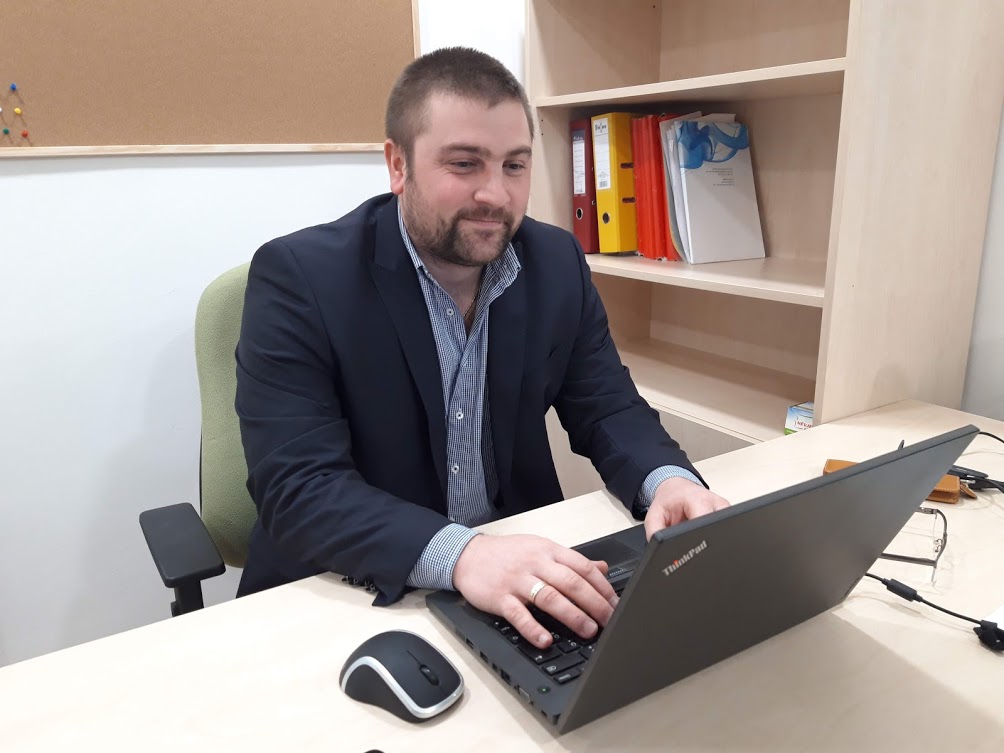
2020. January 10, Friday 07:20 | Scientific background
A human kinesiologist who graduated at the University of Physical Education, Gergely Langmár will be working as a research fellow for the best possible practical application of survey results.
Hestarted his assignment as a member of the Sports Sciences team – having appropriate medical background – at the National Academy of Handball at the beginning of the year.
“I will be responsible for the field of sports science, primarily I will be active in the field of measurement methodologies, measurement technologies, integration of existing data into the system, data analysis and the elaboration of the feedback for coaches, and my tasks will also include increasing the number of scientific publications linked to NEKA. Of course, since I consider myself both a theoretical and a practical expert, I would like to be involved not only with tasks at the desk but also in the actual measurements” – summarised Gergely Langmár his work activities.
“Today's state-of-the-art technologies, which are also available at the National Academy of Handball, are so advanced that they can measure a wealth of data.Our job is to extract from them the key variables that are needed and the ones we can influence in practical education.”
In elite sports, including handball, it is important to look at player performance.
“It is important to note that talent cannot be examined, and there is no technology to measure who reads the game or who anticipates well on the court. However, at the same time we are capable of measuring and optimizing athlete workload, rest-regeneration ratio, and we can identify and prioritize risk factors for players and give directions for development. We know in which area to improve a young player in order to become a professional athlete, avoiding injuries and attrition.
In my opinion, the most expensive junior player is the one who has not realized his or her potential.When you have a good subject with receiving the right stimuli, that player is more likely to avoid injuries and the problems arising from that. So, you have a better chance of succeeding. What we can influence, what we can optimize is the physical side. A young, talented handball player with the right physicality can evolve to become a very good player who can perform at international level as well.”
Various measurements and data collection activities play an increasingly important role in the domestic hubs of the sport.
“I see that the field of sports science is evolving, the standardization of survey protocols has begun in talent development, and there is still some room for improvement in day-to-day monitoring and feedback.
In Balatonboglár all the conditions are given for proper sports scientific work. The National Academy of Handball is moving in the right direction, both in terms of equipment and professionals. Processes put together well and with a good structure, a progressively developed system, including good medical and scientific background have been built up in the recent past, and I will endeavour to add my own professional knowledge for this field.” – expressed our new colleague his assumptions for the website.
Gergely Langmár graduated as a human kinesiologist at the University of Physical Education in 2010. He worked for the Performance Diagnostics and Research Unit at the National Institute of Sports Health as well as co-authored the Integrated Laboratory Management Concept of the university. He was a member of the sports diplomacy delegation comprised of the Embassy of Colombia in Hungary (MKN), the University of Physical Education (TE)and the Colombian Rural Development Nonprofit Ltd. (NGO) with the support of the Ministry of Foreign Affairs, aiming at establishing contacts and a cooperation in the field of International Education, Research and Sports. He took up his duties with the National Academy of Handball on 1 January 2020.
